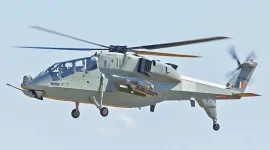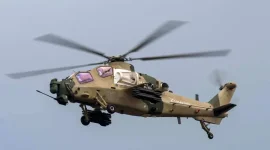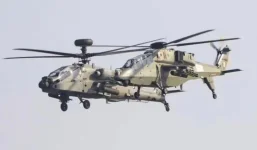- Views: 2K
- Replies: 10
India's domestically developed Light Combat Helicopter (LCH), the HAL Prachand, is set to receive a substantial upgrade to its offensive capabilities.
A new, indigenous 80mm unguided rocket system has been successfully developed through a cooperative project involving TridenTech Engineering, the Indian Institute of Technology (IIT) Madras, Bharat Electronics Limited (BEL), Reliance Aerospace Limited (RAL), and BILVA Technologies.
This development marks a significant step in enhancing the firepower of the advanced helicopter platform.
This newly created 80mm weapon system is intended to replace the currently equipped 70mm FZ275 Laser Guided Rockets (LGR), which are sourced from the international aerospace and defence technology firm, Thales.
The transition to the indigenous 80mm rockets underscores India's push towards self-sufficiency in critical defence technologies.
The versatility of the Prachand LCH in combat scenarios will be greatly increased by the new 80mm rocket system, which can be fitted with several different types of warheads.
These options include High-Explosive Anti-Tank Fragmentation (HEAT-Frag) rounds effective against armoured vehicles, anti-runway munitions designed to disable enemy airfields, thermobaric warheads creating powerful blast effects ideal for clearing structures or fortified positions, and illumination rounds to light up the battlefield during night operations.
This adaptability allows the helicopter crew to effectively engage a wide spectrum of targets.
A key advantage of the indigenous 80mm rocket is its extended operational range. Compared to the approximate 7-kilometre range of the imported 70mm FZ275 LGR, the new Indian system is engineered to reach targets between 10 and 12 kilometres away.
This increased stand-off distance significantly enhances the Prachand's ability to attack targets while remaining further from enemy defences, thereby improving the safety and survivability of the aircraft and its crew in hostile environments.
The decision to replace the sophisticated, imported 70mm laser-guided rockets with the new 80mm system reflects India's strategic emphasis on bolstering its domestic defence manufacturing capabilities under the 'Make in India' initiative.
While the initial deployment will be the unguided version, reports suggest that work is underway to develop a laser-guided variant of the 80mm rocket in the future.
This would eventually provide the Prachand LCH with precision strike capabilities using a fully indigenous solution, further reducing reliance on foreign suppliers for advanced weapon systems.



